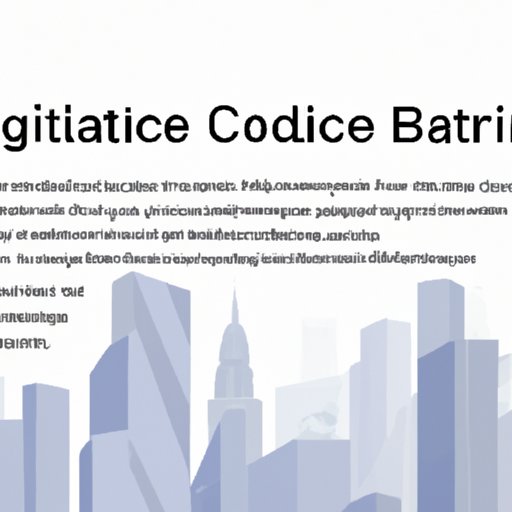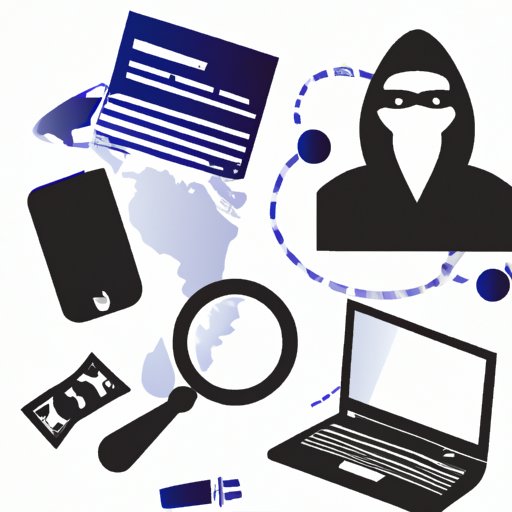Introduction
Technology has become an integral part of our lives, and its use is pervasive in almost all aspects of society. However, it has also been used by criminals to facilitate their activities, from organized crime to online fraud and money laundering. In this article, we explore how technology increases crime and look at the impact of digital tools and big data on criminal activity.
Exploring the Relationship between Technology and Organized Crime
Organized crime is a major threat to public safety and security, with criminal organizations using sophisticated methods to carry out their operations. Technology has played an important role in helping these organizations become more organized and efficient. For example, criminals have used encrypted communication tools such as WhatsApp and Telegram to evade detection by law enforcement agencies. They have also used social media platforms to spread propaganda, recruit new members and plan operations. In addition, they have used online marketplaces to buy and sell weapons, drugs and other illegal goods.
The use of technology by organized crime groups has had a significant impact on the way they operate. It has enabled them to become more organized and efficient, allowing them to carry out their activities with greater speed and precision. This has made it more difficult for law enforcement agencies to detect and disrupt criminal activity.

Examining the Role of Technology in Online Fraud and Scams
Online fraud and scams are becoming increasingly common, with criminals taking advantage of the anonymity and global reach of the internet to target victims. Common types of online fraud and scams include phishing, romance scams, identity theft and business email compromise.
Technology can be used by criminals to carry out these scams. For example, they may use automated bots to send out large numbers of emails containing malicious links or attachments. They may also use stolen credit card information to make purchases or transfer funds. In addition, they may use spoofed websites or fake social media profiles to trick victims into disclosing personal information or transferring funds.
The use of technology for online fraud and scams has had a major impact on victims, with many losing money or having their identities stolen. It has also made it easier for criminals to carry out these activities, making it more difficult for law enforcement agencies to detect and disrupt them.
Analyzing the Use of Digital Tools to Facilitate Money Laundering
Money laundering is the process of concealing the source of illegally obtained funds. Criminals use various digital tools to facilitate money laundering, including cryptocurrencies, virtual currencies and digital payment services. Cryptocurrencies such as Bitcoin, Ethereum and Litecoin can be used to move funds anonymously across borders, while virtual currencies such as Second Life’s Linden Dollars can be used to purchase goods and services without leaving a trace.
The use of digital tools for money laundering has had a significant impact on the global financial system. It has made it easier for criminals to hide the source of their funds, making it more difficult for law enforcement agencies to detect and disrupt their activities. In addition, it has enabled criminals to move large amounts of money quickly and easily across borders.

Investigating the Use of Encryption Technologies to Conceal Criminal Activity
Encryption technologies are used by criminals to conceal their activities. These technologies involve the use of mathematical algorithms to scramble data, making it unreadable to anyone without the correct decryption key. Encryption technologies are commonly used by criminals to hide their communications, transactions and files from law enforcement agencies.
The use of encryption technologies has had a major impact on criminal activity. It has made it more difficult for law enforcement agencies to detect and disrupt criminal activity, as encrypted data cannot be accessed without the correct decryption key. In addition, it has enabled criminals to communicate and transact with greater anonymity, making it more difficult for law enforcement to identify and track them.

Examining the Implications of Big Data for Criminal Justice Systems
Big data is a term used to describe large sets of data that can be analyzed to uncover patterns and trends. Criminal justice systems are increasingly using big data to solve crimes. For example, police departments are using predictive analytics to identify areas where crime is likely to occur, while courts are using data-driven approaches to determine the likelihood of recidivism in criminal cases.
The use of big data by criminal justice systems has had a major impact on how crimes are investigated and prosecuted. It has enabled law enforcement agencies to identify suspects more quickly and accurately, as well as to target resources more effectively. In addition, it has enabled courts to make more informed decisions about sentencing and parole.
Conclusion
This article has explored how technology increases crime by enabling criminals to become more organized and efficient. It has examined the role of technology in online fraud and scams, the use of digital tools to facilitate money laundering, and the implications of big data for criminal justice systems. Technology has had a major impact on criminal activity, making it more difficult for law enforcement agencies to detect and disrupt it. To tackle the problem of technology-related crime, it is essential that governments invest in the latest technologies and develop robust policies and regulations to ensure that criminals do not take advantage of them.
(Note: Is this article not meeting your expectations? Do you have knowledge or insights to share? Unlock new opportunities and expand your reach by joining our authors team. Click Registration to join us and share your expertise with our readers.)
